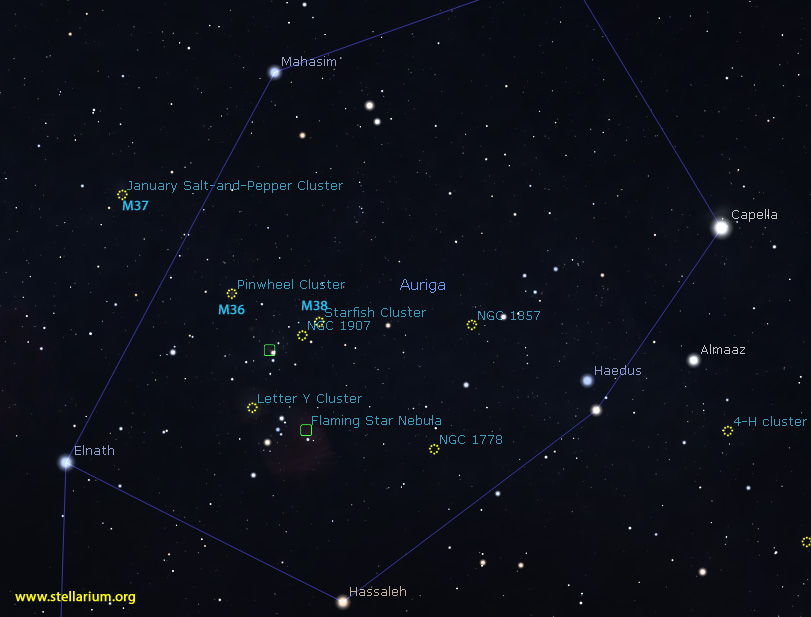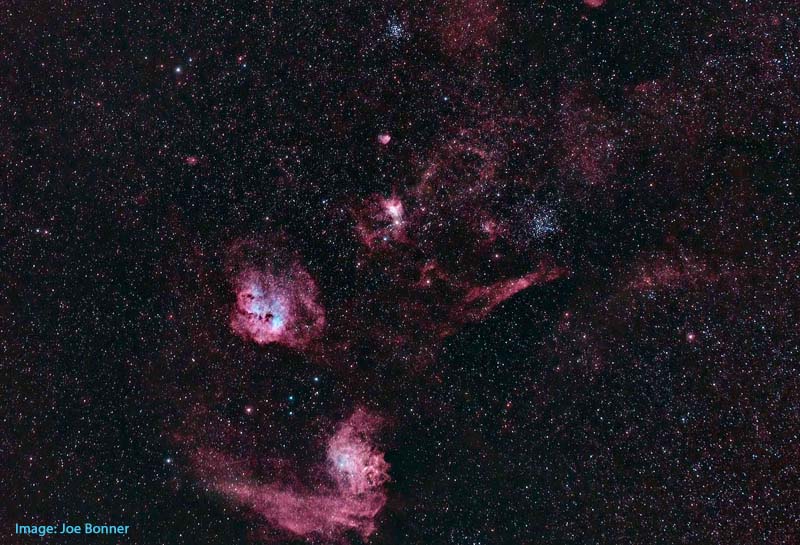The Flaming Star Nebula
For most of Canada, winter has been extra brutal this year. However, for those who insist on challenging the cold, February nights will not disappoint. Perched high in the night sky is the constellation Auriga the Charioteer. Its bright beacon – Capella shines a tad brighter than zero magnitude. Auriga is home to eleven exoplanets which can be found with a six-inch reflecting telescope.

Embedded are three nice open star clusters located in the lower half of the asterism. From left to right, they are M37 also referred to as the Auriga Salt and Pepper Cluster, M36 – the Pinwheel Cluster, and M38 – the Starfish Cluster. Binoculars are only needed to locate these great groupings of distant suns. They reside 4,511, 4,340, and 3,480 light-years respectively from us. From country skies, Auriga and its clusters lie on the fainter winter Milky Way. With a dusting of fainter stars, this is a great wide-angle target to image from dark skies.
A little south of M38 we see two-star forming regions identified as Tadpole Nebula (IC410) and the much larger magnitude six Flaming Star Nebula (IC 405). The nebula is an estimated 1,500 light-years from earth and appears a little larger than the full moon in the sky. It is both a glowing emission and a reflection nebula. The image below was taken by Joe Bonner from a suburb in Ottawa south under Bortle 8 sky. He used a Rokinon 135 mm f/2 lens mounted on a Skywatcher Sky Adventurer. The camera was a ZWO ASI294mc pro and an Optolong L-Enhance dual-band filter.

From our trio of planets, we enjoyed viewing in the western sky over the past few months, Jupiter is the sole member sinking in the west a couple of hours after sunset Venus (now showing a nice 17% crescent phase) has moved into the morning sky along with Mars, located to its lower right. Mercury is found low in the southeast and will be at its greatest elongation on February 16. Saturn is presently too close to the sun to safely observe but into morning twilight at the end of the month.
The zodiacal light will be visible for a two-week period in the western sky commencing February 18. This faint arc of light requires dark skies and is the refraction of sunlight off the interstellar dust of our solar system. The slanted arc appears to point to the Pleiades star cluster. It will also be visible as well next month. The new moon occurs on February 1 and the Full Snow Moon occurs on February 16.
Until next month, clear skies everyone.
| Attachment | Size |
|---|---|
| 121.49 KB | |
| 131.76 KB |
